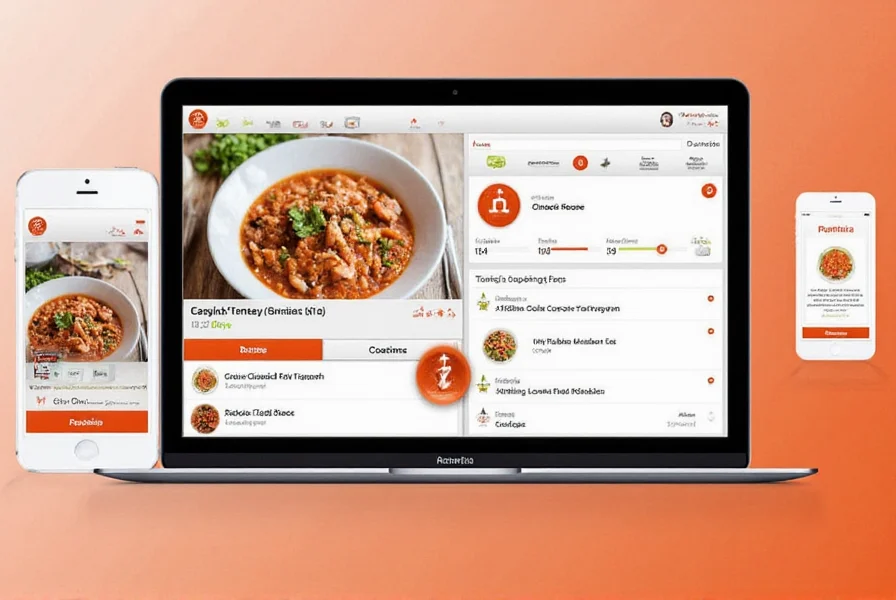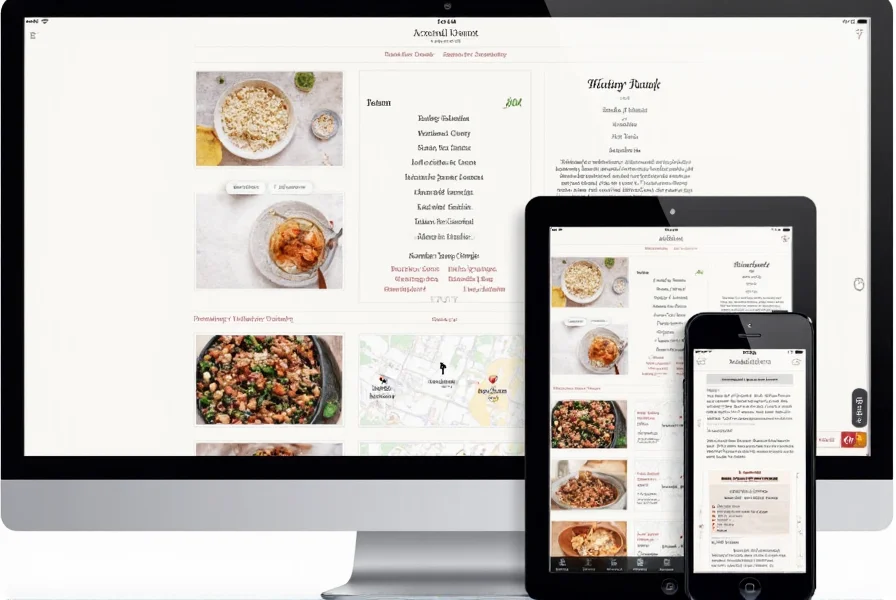Paprika Recipe Manager has become a go-to solution for home cooks and professional chefs seeking an efficient way to manage culinary collections. The application's streaming capabilities represent one of its most valuable features, allowing instant access to recipes regardless of location or device. This guide explores how Paprika's unique streaming technology works, setup requirements, and practical implementation strategies for maximizing your cooking experience.
Understanding Paprika's Streaming Technology
Unlike conventional cloud-based recipe applications, Paprika utilizes a direct device-to-device connection system that functions as a local network stream. When users refer to "Paprika stream," they're typically describing the application's ability to push recipes from a primary device to secondary displays without intermediary servers. This approach offers significant advantages in environments with unreliable internet connectivity, such as many kitchen spaces.
The streaming mechanism operates through Paprika's proprietary synchronization protocol, which establishes secure connections between authorized devices on the same local network. This technology enables real-time recipe updates across all connected devices, ensuring ingredient quantities automatically adjust when serving sizes change on any single device.
Setting Up Paprika Streaming Across Devices
Establishing a reliable Paprika streaming environment requires careful configuration. The process differs slightly between operating systems but follows the same fundamental principles regardless of your device ecosystem.
| Device Type | Minimum Requirements | Streaming Setup Process |
|---|---|---|
| iOS Devices | iOS 14+, Paprika 4+ | Enable 'Allow Local Network Access' in device settings, then activate 'Stream to Other Devices' in Paprika's settings menu |
| Android Devices | Android 10+, Paprika 4+ | Grant local network permissions during installation, then configure streaming devices through the 'Kitchen Display' section |
| macOS/Windows | macOS Catalina+/Windows 10+, Paprika 4+ | Access 'Streaming Preferences' from the application menu, then authorize connected devices through the network discovery interface |
Practical Applications for Recipe Streaming
Home cooks have developed numerous creative implementations for Paprika's streaming capabilities. The most common use case involves establishing a kitchen display system where recipes stream directly to tablets mounted near cooking surfaces. This eliminates the need for physical cookbooks and prevents device contamination from food preparation.
Professional culinary environments leverage Paprika streaming for standardized recipe distribution across multiple workstations. Chefs can push updated recipes to all kitchen displays simultaneously, ensuring consistency in preparation methods and portion sizes. The automatic scaling feature proves particularly valuable when adjusting recipes for different banquet sizes.
Meal preppers utilize Paprika's streaming functionality to coordinate multiple recipes simultaneously. By streaming different components of a meal plan to separate devices, they can efficiently manage complex cooking schedules without constant device switching.
Troubleshooting Common Streaming Issues
Despite its reliability, users occasionally encounter challenges with Paprika's streaming features. Network configuration represents the most frequent obstacle, particularly in environments with segmented Wi-Fi networks. When devices appear unable to detect each other, verify that all equipment connects to the same network band (either 2.4GHz or 5GHz) as Paprika cannot bridge between frequency bands.
Firewall settings on computers sometimes block the necessary communication ports. For optimal streaming performance, ensure ports 54321 (TCP) and 54322 (UDP) remain accessible between devices. Most home routers require no special configuration, but corporate or educational networks may need administrator intervention.
When streaming to television displays through casting devices, users should consider the display's native resolution. Paprika automatically adjusts recipe formatting, but extremely large screens may require manual font size adjustments within the application's display settings for optimal readability.
Maximizing Your Paprika Streaming Experience
Seasoned Paprika users recommend several strategies for enhancing the streaming experience. Creating dedicated 'kitchen network' profiles on mobile devices prevents accidental disconnections during cooking sessions. This involves configuring devices to prioritize the kitchen Wi-Fi network and disabling automatic switching to cellular data.
For households with multiple cooks, establishing user-specific streaming channels prevents recipe conflicts. Paprika supports up to five simultaneous streaming connections, allowing different family members to access separate recipes on individual devices without interference.
Integrating voice control systems with Paprika streaming creates hands-free recipe navigation. While Paprika lacks native voice support, third-party automation tools can trigger specific recipe streams through voice commands, proving invaluable when hands are occupied with food preparation.

Comparing Streaming Approaches Across Recipe Platforms
While several recipe management applications offer cloud synchronization, Paprika's local streaming approach provides distinct advantages for kitchen environments. Unlike cloud-dependent competitors that require constant internet connectivity, Paprika continues functioning during network outages once the initial connection establishes.
The direct device connection model also enhances privacy, as recipe data never leaves your local network. This proves particularly valuable for professional chefs protecting proprietary recipes or households concerned about data collection practices common in free recipe applications.
When evaluating recipe streaming solutions, consider your specific workflow requirements. Paprika excels in environments where immediate access and reliability outweigh the need for extensive social features or community recipe sharing. The one-time purchase model (as opposed to subscription services) makes it economically advantageous for long-term use.
Final Considerations
Implementing Paprika's streaming capabilities transforms recipe management from a static activity into an integrated kitchen workflow. The application's focus on local network reliability rather than cloud dependency makes it particularly valuable in cooking environments where internet connectivity may be inconsistent. By understanding the proper configuration requirements and practical implementation strategies, users can maximize the efficiency of their culinary planning and execution.
As kitchen technology continues evolving, Paprika's streaming functionality provides a stable foundation for integrating digital recipe management into physical cooking spaces. The seamless transition between recipe planning on primary devices and hands-free access during preparation represents a significant advancement in culinary workflow optimization.











 浙公网安备
33010002000092号
浙公网安备
33010002000092号 浙B2-20120091-4
浙B2-20120091-4